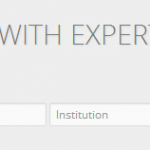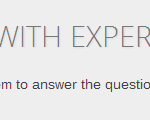Recunoscand nevoia de o crestere a transparentei, accesibilitatii si impactului, azi Integru.org lanseaza Interact (beta), cu un prim val de facilitati proiectate pe ideea de comunitate: acum poti sa participi direct si usor la rezolvarea tuturor cazurilor de (presupuse) abateri de pe Integru.org!
Expertii din domeniu care furnizeaza recenziile sunt in continuare punctul forte al platformei Integru, dar cea mai mare parte a muncii necesara rezolvarii unui caz se efectueaza altundeva, de catre multe persoane independente: cautarea expertilor potriviti din domeniu si invitarea lor sa participe sunt doua din cele mai grele sarcini. Evidentierea pasajelor si anotarea documentelor este un alt monstru.
Ideea e simpla: Oricine – literalmente oricine – cu acces la internet, de la publicul larg la cel mai faimos cercetator, poate acum sa participe usor si este incurajat calduros sa o faca!
Viziteaza recenziile nou publicate, Recenzia 9 si Recenzia 10, pentru a incerca pe loc functiile Interact (beta) si a ajuta la obtinerea mai multor recenzii si informatii!
Ce este Interact (beta)? Deocamdata aceasta contine un set de 3 facilitati: Recomand, Invit, si Raspund.

 Recomanda experti in mod direct
Recomanda experti in mod direct
Cunosti pe cineva cu expertiza in domeniul unui caz ce apare pe Integru.org? Foloseste pur si simplu
formularul Recomand (incearca-l) de pe pagina cu recenzia!
Introdu informatiile de contact concise in primul pas. Nu e nicio problema daca nu cunosti adresa de email, dar ar fi daca ai putea sa incerci sa o gasesti si sa o incluzi. Altfel procesul dureaza mai mult pentru ca altcineva va trebui sa o faca.
 Invita expertii pe loc
Invita expertii pe loc
S-ar putea sa-i cunosti, sau sa le fii student, sau sa lucrati in domenii similare … sau pur si simplu sa fi auzit de ei … de ce sa nu-i inviti sa participe? Dupa introducerea datelor lor de contact, vei vedea formularul Invit (incearca-l), unde poti alege sa trimiti o invitatie sau doar sa trimiti contactele lor catre Integru.org.
Poti sa modifici continutul invitatiei dupa plac (la urma urmei, este semnata de tine). De asemenea, poti sa alegi dintre un model Informal sau Formal, care sa te ajute sa incepi – in mod normal nu va fi necesar sa modifici prea mult textul. Intregul proces dureaza cateva minute sau chiar mai putin!
Nu ti se cere sa furnizezi adresa ta de email dar e de asteptat sa semnezi invitatia in nume propriu, ca gest de politete fata de expertii invitati. Nu-ti face griji de spam fata de experti sau altcineva. Invitatiile tale nu sunt trimise orbeste. Acestea sunt verificate inainte de a fi trimise in numele tau.
Expertii care primesc o astfel de invitatie pot sa dea clic pe link pentru a vizita pagina cazului si a raspunde pe loc … vezi mai jos!
Poti si sa te rezumi la a trimite detaliile lor de contact catre Integru.org, dar asta inseamna ca altcineva trebuie sa-i invite si procesul dureaza mai mult. Insa intelegem ca multi dintre voi cunosc experti in domeniu dar nu se simt confortabil sa le scrie personal.
Raspunde tu pe loc intrebarilor din recenzie
Multi dintre voi au expertiza in domeniul unui caz. Cum ar fi sa raspunzi chiar tu intrebarilor din recenzie si sa te alaturi celorlalti experti care au participat pe Integru.org? Acum poti sa faci asta direct pe pagina de recenzie, folosind formularul Raspund (incearca-l). Considera ca ai primit o invitatie calduroasa!
Intai furnizeaza detaliile tale de contact si numele institutiei sau companiei de afiliere. Apoi include adresa unei pagini web care indica afilierea ta cu institutia sau compania respectiva. Acest lucru e necesar pentru verificare si pentru protejarea platformei Integru impotriva persoanelor mai putin bine intentionate.
Apoi raspunde intrebarilor din recenzie. Raspunsurile tale vor fi verificate si daca totul pare in regula — si de ce nu ar parea? — ve fi contactat pentru confirmare. Apoi recenzia ta va fi publicata si vei deveni cel mai recent varf de lance care ia o pozitie publica impotriva abaterii de la normele etice din cercetare, meritand toata lauda!
Poti deveni si un Colaborator Independent al Integru.org!
Un Colaborator Independent al Integru.org?
Suna bine … dar ce inseamna? De multe ori administratorii contacteaza si invita contribuitorii activi sa devina un colaborator mai apropiat. Vei avea un cont pe website si acces la facilitatile Editoriale. Acestea includ invitarea altor experti recomandati de alte persoane, interactiunea cu expertii invitati, ajutorul la scrierea si publicarea cazurilor noi, implicarea in imbunatatirea platformei Integru etc.
De exemplu, toate invitatiile trimise pana acum expertilor au fost trimise de astfel de colaboratori independenti, in nume propriu, iar acum poti sa inviti si tu experti in acelasi mod, folosind formularul Invit. Un alt exemplu este marcarea in culori a documentelor si recomandarea expertilor din Recenzia 10 si 9, si altele din trecut: ele au fost facute de colaboratori independenti.
Poti ramane anonim fata de noi daca doresti. De exemplu, documentele din Recenzia 10 au fost gasite, marcate in culori si scanate de catre un colaborator anonim. Da, toate acele 400+ pagini de text! Nu stim cine este el/ea, si nici nu intrebam. Munca lor este aspectul cel important, cel care face o diferenta, si cel care este apreciat de comunitate si de publicul larg.
Integru.org este de fapt doar o platforma. Una condusa de persoane independente. Controlul apartine publicului larg si academicilor. In timp va creste si va deveni si mai deschisa. Lansarea de azi este doar un prim pas.
Intra in discutie
Avem o Sectiune de Opinii la care poate contribui oricine cu un material legat de integritatea in cercetare/educatie si alte probleme legate de aceasta.
Inainte de toate, esti invitat calduros sa scrii un material de Opinie. Folosesti pagina de contact sau trimite un pentru a-ti exprima interesul.
Intra in discutie la articolele publicate. Comentariile sunt deschise tuturor si iti poti pastra anonimatul daca preferi. Autorii materialelor sunt nerabdatori sa interactioneze cu cititorii, intrucat pentru multi acesta este primul articol scris pe subiect.
Profesorul Andrew Galloway, Directorul Departamentului de Limba Engleza a Universitatii Cornell, USA, tocmai a scris un articol de Opinie, care este si o invitatie directa la discutie si dezbatere publica, exprimandu-si totodata interesul sincer de a invata mai multe de la voi, cititorii, despre sistemul din Romania si despre ce se poate face. Poti incepe acum sa-ti exprimi parerea despre Opinia exprimata de Prof Galloway.
Raspandeste vestea
Exista o pagina Facebook, un feed Twitter si, bineinteles website-ul Integru.org. Comentariile publice sunt binevenite, deci participa la discutia din articolele de Opinie, dar si la cea din Recenziile publicate – poti sa adaugi comentarii publice pentru a oferi mai multe detalii despre un caz anumit sau posibile corectii. Comentariile sunt moderate, astfel incat daca doresti sa furnizezi informatii personale, trebuie doar sa mentionezi acest lucru in comentariu iar noi nu-l vom publica (sau foloseste pagina de contact).
Raspandeste vestea privind noile facilitati Interact (beta) si indeamna-ti prietenii si colegii sa participe!
Ce urmeaza?
Pe scurt … multe! Vor exista interfete web dedicate pentru aproape fiecare sarcina ce exista pe timpul vietii unui caz de Recenzie, de la nastere la publicare si ulterior. Acestea sunt deja in pregatire, deci fii pe faza!
Nu uita, Integru.org este doar o platforma. Aceasta este impinsa inante de publicul larg, de cercetatori si de experti.
Nu exista o autoritate centrala pentru integritatea academica, dar totusi educatia si cercetarea sunt internationale si fara granite. Astfel, depinde de noi sa implementam un sistem eficient de protectie, sa participam in acesta si sa-l mentinem deschis si independent, asa cum trebuie sa fie domeniul academic.
Aceasta lansare este doar un prim pas.



Dear all,
I hope that integru.org is a site addressed to universal plagiarism and not just to Romanian one.
Let’s talk about more shortcomings of the evaluation system in research and research, generally not just in Romania. I have met all of these in Italy, Austria, Romania….
.Articles with ten co-authors for which worked just one or two;
.Projects in which are employed “cheap “researchers (usually from Eastern) on very low salaries and the key-researchers of the projects doing nothing else than collecting high salaries, eventually the researchers having no rights to publish;
.Researchers who are employed just on the basis of uncompetitiveness and obedientness criteria – understanding less about projects ensure uncompetitiveness later;
.Commissions according funds created on the basis of friendship, etc
.PhD students with no basic knowledge becoming the next scientists
and the list is open
Feel free to use the Contact page to submit any conclusive material that you have.
What is worse: to plagiate a dissertation or to use a fake doctor title?
Norica Carmen Godja, manager of scientific area at CEST-Wiener Neustadt, Austria, with a CV that can be found here http://www.zukunftsakademie.or.at/media/com_eventbooking/cv_dipl.-ing.%20norica-carmen%20godja.pdf is a graduated of the Faculty of Textiles – leather treatment.
She is getting EU projects in electrochemistry engineering using a FAKE doctor title.
http://cordis.europa.eu/projects/rcn/108902_en.html
Coordinator: CEST KOMPETENZZENTRUM FUR ELEKTROCHEMISCHE OBERFLACHENTECHNOLOGIE GMBHÖSTERREICH
Administrative contact: Norica-carmen GODJA (Dr)
Viktor-Kaplan-Strasse 2, WIENER NEUSTADT, ÖSTERREICH
Tel: +43-26222226618
Email: Contact
The title of this project is hilarious and wrong from scientific point of view.
Chromium free surface pre-treatments and sealing of Tartaric Sulphuric Anodizing-
Dr Norica Carmen Godja
The pre-treatments refer to a free surface of Chromium?a free surface is: the surface of a fluid that is subject to constant perpendicular normal stress and zero parallel shear stress, such as the boundary between two homogenous fluids, for example liquid water and the air in the Earth’s atmosphere. Unlike liquids, gases cannot form a free surface on their own(Wikipedia). We can not beleive that the CEST’s Chromium used is forming a free surface.
Chromium refers to a metalic state (0) but the pre-treatments refers to an electrolyte containing chromate(CrO4)2- with Cr(VI). So, it might be chromate instead of chromium. This confusion is annoying for a chemist.
Then – Tartaric Sulphuric Anodizing- which one is anodizing here? The Tartaric Sulphuric? I really can not beleive it. It might be Tartaric Sulphuric Acid (TSA) – anodizing instead of acid is another annoying error.
Sealing of Tartaric Sulphuric Anodizing – who is sealing here? The Tartaric Sulphuric Anodizing? The sealing is of the aluminium oxide pores formed during of anodization process.
Conclusion: not any undergraduated of the Faculty of Textiles could be a scientific manager in chemistry/physics and more, a doctor.
“Dr” Norica Carmen Godja uses to fire the researchers with scientific studies (doctor and professors) maybe she wants to be the only one scientist who remains at CEST.
If the scientific meaning of the title looks as this one, how would be the results of research?
Bellow there are three proposals on a similar topic, all of them looking also very similar
1. Chromium free surface pre-treatments and sealing of Tartaric Sulphuric Anodizing
Dr Norica Carmen Godja
Objective: Corrosion of Al has to be counteracted by first anodizing the Al parts and applying further protective coatings. Anodized aluminium is normally further processed with a sealing as a final step after anodizing. A hot water sealing process is one of the widely used methods. However in order to close (seal) the pores in the aluminium oxide anodized layer for corrosion protection a process involving boiling water containing chromate is still commonly used. Cr(VI)-based sealing solutions have been employed for several decades, but remain one of the most effective and commonly-used methods to improve corrosion resistance of anodized aluminium. Alternative sealing methods have also been proposed for example with Ni(II), Co(II), Ni(II) and Co(II), rare earth salts alkali metal fluorides, alkanolamine salts of phosphonic acids, Cr(III), fatty acids, silicates, etc. Kendig and Buchheit indicate that 45 of the 92 naturally occurring elements have been considered as replacements for Cr(VI) in conversion coatings on aluminium. In general these approaches have not been as successful as the Cr(VI) sealing. Also it should be noted that Ni(II), Co(II) and fluorides are not without health implications, whereas most organic molecules would be expected to have limited lifetimes under the extreme conditions (UV radiation, low pressure, large temperature range) experience by commercial aircraft during operation.
Therefore, of the previously identified approaches Cr(III)-containing or silicate-forming sealing solutions are preferred options. Encouraging results were obtained with deposition of films of CeO2.2 H2O on aluminium alloys in a few minutes at room temperature with or without catalyst, though the performances still do not equal those of CCC. Detailed investigations and characterization of the obtained will be performed. The optimized sealing and pre-treatments process will be applied to a flat test panel of 384 x 742 mm.
2. Corrosion protection of Aluminium unpainted parts: development of an appropriated Cr free sealing process on thin SAA layer (5 µm)
Dr Erich Kny
Objective: Corrosion of Al has to be counteracted by first anodizing the Al parts and applying further protective coatings. During anodizing, Al reacts with the electrolyte and a layer of aluminium oxide is formed, which is highly porous and is subject to corrosive attack. Therefore, anodized Al is normally further processed with a sealing as a final step. Sealed SAA industrial processes providing thicker layers (~10 µm) are already in the market, but the missing step is to develop a well-suited process for thin layers ( 5 µm) that meets the corrosion resistance requirements.
Hot water sealing is one of the widely used methods. However in order to close (seal) the pores in the anodized layer for corrosion protection a process involving boiling water containing chromate is still commonly used. Cr(VI)-based sealing solutions have been used for several decades, but remain one of the most effective and commonly-used methods to improve corrosion resistance of anodized Al. Alternative sealing methods have also been proposed, e.g. with Ni(II), Co(II), Ni(II) + Co(II), rare earth salts, alkali metal fluorides, alkanolamine phosphonates, Cr(III), fatty acids, silicates, etc. It should be noted that Ni(II), Co(II) and fluorides are not without health implications, whereas most organic molecules would be expected to have limited lifetimes under the extreme conditions (UV radiation, low pressure, large temperature range) experience by commercial aircraft during operation. Therefore, of the previously identified approaches Cr(III)-containing or silicate-forming sealing solutions are preferred options. Encouraging results were obtained with deposition of films of CeO2x2 H2O, though the performance still does not equal those of CCC. Characterization with methods such as SEM, EIS, AFM-SECM will lead to more detailed understanding of sealing and corrosion mechanisms and therefore optimizing sealing parameters with respect to corrosion resistance and minimized energy consumption.
3. Chromate free and energy efficient sealing of TSA anodic films for corrosion protection
Dr Erich Kny
Objective: Corrosion of Al has to be counteracted by first anodizing the Al parts and applying further protective coatings. During anodizing, aluminium reacts with the electrolyte and a layer of aluminium oxide is formed on the surface of the aluminium specimen. This coating is highly porous and is subject to attack from the environment and corrosive elements. Therefore, anodized aluminium is normally further processed with a sealing as a final step after anodizing. A hot water sealing process is one of the widely used methods. However in order to close (seal) the pores in the aluminium oxide anodized layer for corrosion protection a process involving boiling water containing chromate is still commonly used. Cr(VI)-based sealing solutions have been employed for several decades, but remain one of the most effective and commonly-used methods to improve corrosion resistance of anodized aluminium. Alternative sealing methods have also been proposed for example with Ni(II), Co(II), Ni(II) and Co(II), rare earth salts, alkali metal fluorides, alkanolamine salts of phosphonic acids, Cr(III), fatty acids, silicates, etc. Already about 45 of the 92 naturally occurring elements have been considered as replacements for Cr(VI) in conversion coatings on aluminium. In general these approaches have not been as successful as the Cr(VI) sealing. Also it should be noted that Ni(II), Co(II) and fluorides are not without health implications, whereas most organic molecules would be expected to have limited lifetimes under the extreme conditions (UV radiation, low pressure, large temperature range) experience by commercial aircraft during operation. Therefore, of the previously identified approaches Cr(III)-containing or silicate-forming sealing solutions in REACH compliant processes are preferred options. An adaption of the electrical TSA cycle for improved corrosion resistance without negative impact on fatigue life of components will be developed. Detailed investigations and characterization of the obtained corrosion protected surfaces via ESEM, Raman + IR-spectroscopy and ESCA will be performed.
Please use the Contact page to submit any conclusive documents and other material that you have. If you can highlight the offending sections/paragraphs in each document, that will help our collaborators analyzing/processing it for review.
ceva stiri de pe slahdot si nature:
http://www.nature.com/news/romanian-science-in-free-fall-1.13579
http://science.slashdot.org/story/13/08/30/179209/romanian-science-in-freefall
Norica Carmen Godja became just a “Mrs” on Cordis web pages, maybe as a result of being published on integru.org above. Note the (Mrs) used now (see below) as opposed to (Dr) used on 28 Aug (see my comment above from 1.5 months ago).
I ask how it is possible to use a fake academic title and to be still a manager of scientific area and get funded by EU research programs?
http://cordis.europa.eu/projects/rcn/110478_en.html
Coordinator: CEST KOMPETENZZENTRUM FUR ELEKTROCHEMISCHE OBERFLACHENTECHNOLOGIE GMBHÖSTERREICH
Administrative contact: Norica-carmen GODJA (Mrs)
Viktor-Kaplan-Strasse 2, WIENER NEUSTADT, ÖSTERREICH
Tel: +43-26222226618
Fax: +43-26222226650
Email: Contact